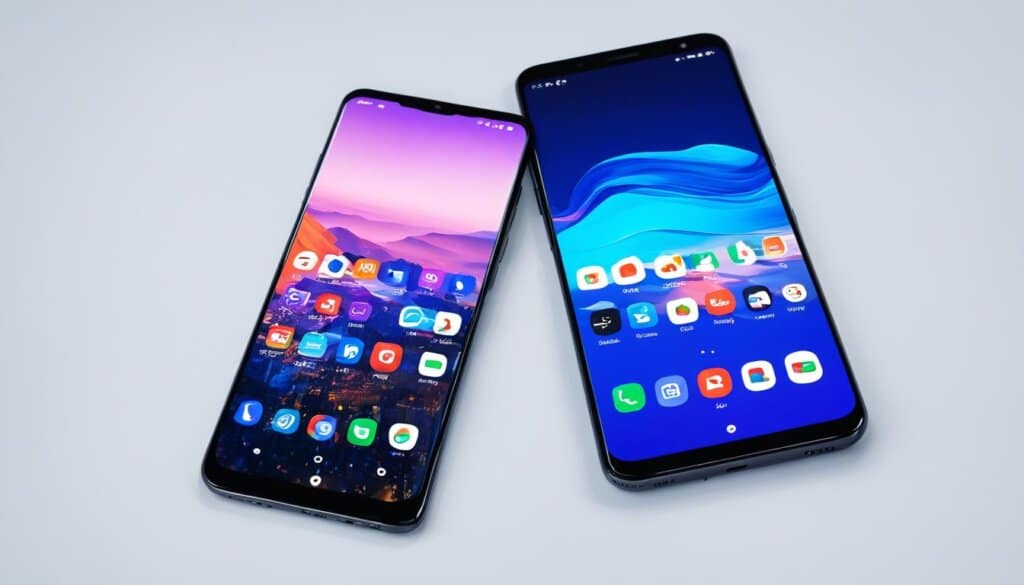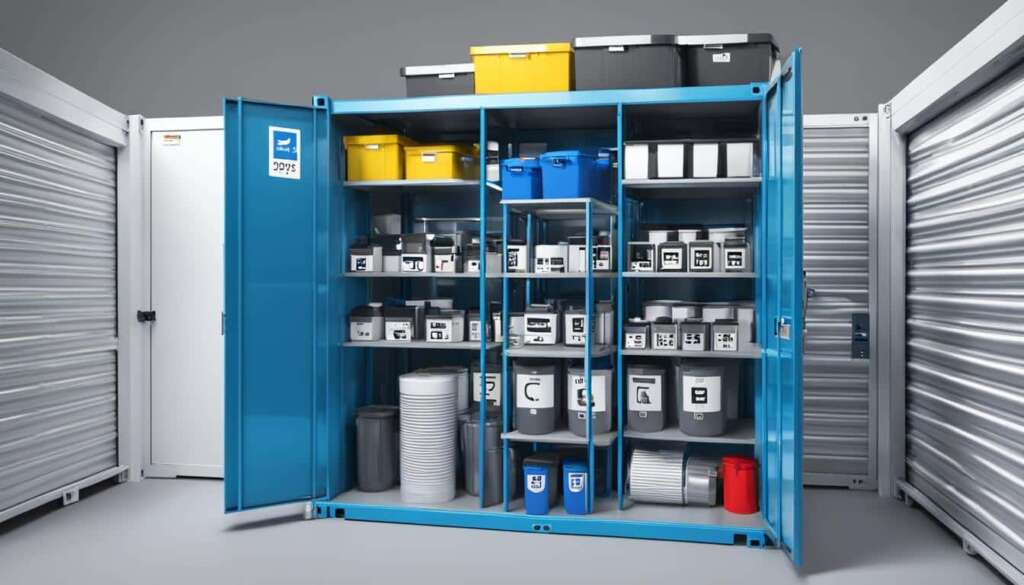Table of Contents
A gigabyte (GB) is a unit of data storage capacity that is equal to 1 billion bytes in decimal notation. However, in binary notation, a gigabyte is equal to 1,073,741,824 bytes. The term gigabyte has been commonly used since the mid-1980s to measure storage capacity. Nowadays, terabytes (TB) have become more common for measuring storage capacity. Cloud providers and hardware vendors still often refer to storage capacity costs in terms of gigabytes, but the transition to terabytes is slowly happening.
Understanding what gigabytes are and how they relate to data capacity is essential in today’s digital world. Whether it’s storing files, accessing cloud services, or choosing the right storage device, having a grasp of gigabytes is crucial.
In the following sections, we will explore what a gigabyte is in simple terms, the difference in how gigabytes are measured, how long it takes to use 1 GB of data, the role of gigabytes in smartphones, the history of gigabyte-capacity storage devices, the distinction between gigabytes and gigabits, and the various gigabyte-size storage options available in the market.
What is a Gigabyte in Simple Terms?
Simply put, a gigabyte is a unit of data that represents about 1 billion bytes. It is commonly used to describe the amount of stored data or the capacity of a storage device.
A gigabyte is equivalent to:
- 1,000 megabytes (decimal) or 1,024 megabytes (binary)
- 1,000,000 kilobytes (decimal) or 1,048,576 kilobytes (binary)
- 1,000,000,000 bytes (decimal) or 1,073,741,824 bytes (binary)
Understanding the standard measurements for a gigabyte is important when it comes to data measurement and storage capacity. The decimal and binary equivalents of a gigabyte are used in different contexts and can lead to confusion if not properly understood.
Difference in How Gigabytes are Measured
The measurement of gigabytes can vary depending on whether it is based on base 10 or base 2. Base 10 uses the decimal system, defining 1 gigabyte as 1 billion bytes. This is the standard measurement used by most storage manufacturers and consumers. On the other hand, base 2 uses the binary system, where 1 gigabyte equals 1,073,741,824 bytes. In this system, a gigabyte is sometimes referred to as a gibibyte. The difference between the two measurements has caused confusion, especially with terms like kibibyte, mebibyte, gibibyte, or tebibyte.
| Measurement | Base 10 (Decimal) | Base 2 (Binary) |
|---|---|---|
| Kilobyte | 1,000 bytes | 1,024 bytes |
| Megabyte | 1,000,000 bytes | 1,048,576 bytes |
| Gigabyte | 1,000,000,000 bytes | 1,073,741,824 bytes (gibibyte) |
| Terabyte | 1,000,000,000,000 bytes | 1,099,511,627,776 bytes (tebibyte) |
Note: The table above demonstrates the difference between base 10 and base 2 measurements for kilobytes, megabytes, gigabytes, and terabytes.
Understanding the distinction between base 10 and base 2 measurements is essential when it comes to calculating storage capacities and data transfer rates. It ensures accurate communication and avoids potential misunderstandings in the world of storage technology.
How Long Does it Take to Use 1 GB of Data?
The amount of data usage can vary depending on the type of content being accessed. For instance, 1 GB of data can be used up quickly with various activities, such as:
- Downloading 250 songs
- Sending and receiving 6,180 emails
- Storing 250 10-megapixel photos
- Watching 5 hours of standard-definition movies
- Streaming 353 one-minute YouTube videos
These examples highlight the wide range of data usage that can occur with different types of content. Whether you’re a music lover, an avid photographer, or a binge-watcher, it’s important to understand how quickly 1 GB of data can be consumed.
“Streaming just one movie can use up a substantial portion of your monthly data allowance.”
So, before you indulge in data-intensive activities, consider keeping track of your data usage and exploring ways to optimize it. This will ensure that you make the most out of your data plan without exceeding your limits or incurring extra charges.
Understanding Data Compression and Quality
When it comes to data usage, it’s worth noting that different types of content can vary in size due to data compression and quality. For example, streaming a video in high-definition will typically consume more data compared to the same video in standard-definition. Additionally, file formats, encoding methods, and streaming platforms may employ different techniques to compress data while maintaining acceptable quality.
Therefore, the actual amount of data used for specific activities may vary depending on these factors. It’s always advisable to adjust video quality settings, download content over Wi-Fi whenever possible, and be mindful of data-intensive apps or services that may run in the background.
Understanding Your Data Plan
Understanding your data plan is crucial for managing your data usage effectively. Different service providers offer various data allowances, ranging from a few gigabytes to unlimited data plans. Consider these points when assessing your data plan:
- Check your plan’s data cap: Most plans indicate the maximum amount of data you can use within a billing cycle before speed restrictions or additional charges apply.
- Monitor your data usage: Utilize built-in usage trackers on your device or install third-party apps to monitor your data consumption closely.
- Wi-Fi availability: Take advantage of Wi-Fi networks at home, work, or public spaces to minimize cellular data usage.
- Video streaming settings: Adjust streaming quality on platforms like Netflix or YouTube to avoid excessive data usage.
By understanding your data plan and being mindful of your usage, you can avoid unexpected overages and make the most out of your data allowance.
| Activity | Data Usage |
|---|---|
| Download 250 songs | Approximately 1 GB |
| Send and receive 6,180 emails | Average of 15 KB per email, approximately 93 MB |
| Store 250 10-megapixel photos | Approximately 1 GB |
| Watch 5 hours of standard-definition movies | Estimated 1.5 GB to 3 GB, depending on video quality |
| Stream 353 one-minute YouTube videos | Estimated 1 GB to 1.5 GB, depending on video quality |
What is a GB on a Phone?
When it comes to smartphones, gigabytes play a significant role in determining the storage capacity of the device. Customers can choose from different storage options, each represented by a certain number of gigabytes. For example, the iPhone 13 Pro offers options ranging from 128 GB to 1 TB, while other smartphones may have different available capacities. It’s important to note that the actual available storage capacity might be less than the total capacity due to preinstalled apps and the operating system. Gigabytes also come into play when selecting mobile data plans, as many plans offer a limited amount of data transfer.
When purchasing a smartphone, one of the key considerations is the amount of storage capacity it offers. The more gigabytes (GB) a phone has, the more apps, photos, videos, and other files it can store. Different phones come with varying storage options, allowing users to choose the capacity that suits their needs. For example, the iPhone 13 Pro is available in storage capacities ranging from 128 GB to 1 TB. Other smartphone brands and models may offer similar or different storage options.
However, it’s important to understand that the actual available storage capacity on a phone may be less than the advertised total capacity. This is because the operating system and preinstalled apps take up a certain amount of storage space. For example, if a phone is advertised as having 128 GB of storage, the actual available storage may be around 110 GB or less. Therefore, users should consider their storage needs and take this into account when choosing a phone.
Gigabytes also come into play when selecting mobile data plans. Many mobile service providers offer plans with a limited amount of data transfer per month. This data transfer is measured in gigabytes, and users need to choose a plan that suits their usage requirements. For example, a user who primarily uses their phone for browsing the internet, social media, and streaming music may opt for a plan with 5 GB of data per month. On the other hand, heavy media streamers or gamers may require a plan with higher data allotments, such as 10 GB or more.
Overall, gigabytes play a crucial role in determining the storage capacity of phones and selecting the appropriate mobile data plans. Users should consider their storage needs and data usage requirements when choosing a phone and selecting a plan. By understanding the concept of gigabytes and how they relate to phone storage and data plans, users can make informed decisions to optimize their smartphone experience.
Smartphone Storage Capacities
| Smartphone Model | Storage Capacity Options (in GB) |
|---|---|
| iPhone 13 Pro | 128, 256, 512, 1,000 |
| Samsung Galaxy S21 | 128, 256, 512 |
| Google Pixel 6 | 128, 256 |
*Actual available storage capacity may be less than total capacity due to preinstalled apps and the operating system.

Gigabyte History
The evolution of gigabyte storage capacity has come a long way since its inception. Let’s take a look at the significant milestones in gigabyte history.
- The IBM 3380: The first gigabyte-capacity hard drive, the IBM 3380, was introduced in 1980. It revolutionized the storage industry with its impressive 1.26 GB capacity. This massive hard drive was housed in a refrigerator-sized cabinet, showcasing just how far technology has advanced since then.
- The First 1 GB Drives: In 1991, the first 1 GB hard drives became available to consumers. These drives were considerably smaller than the IBM 3380 and marked a significant advancement in storage technology.
- Continued Growth: Over the years, the storage capacity of hard drives continued to grow exponentially. Today, it’s not uncommon to find hard drives with capacities of up to 20 TB, providing users with ample space to store their digital content.
- Rise of Solid-State Drives (SSDs): As technology advanced, solid-state drives (SSDs) emerged as a viable alternative to traditional hard drives. SSDs are faster, more durable, and can offer even greater storage capacities. Today, SSDs are available with capacities of up to 100 TB, making them a popular choice for professionals and enthusiasts alike.
Gigabyte Capacity Evolution
| Year | Milestone | Storage Capacity |
|---|---|---|
| 1980 | Introduction of IBM 3380 | 1.26 GB |
| 1991 | First 1 GB Drives | 1 GB |
| Present | Maximum Hard Drive Capacity | Up to 20 TB |
| Present | Maximum SSD Capacity | Up to 100 TB |
As we can see from the table, gigabyte storage capacity has experienced remarkable growth over the years. From the humble beginnings of the IBM 3380 to the massive capacities of modern hard drives and SSDs, the evolution of storage technology has transformed the way we store and access our digital data.
Gigabyte vs. Gigabit
When it comes to computer data measurement, it’s important to understand the difference between a gigabyte (GB) and a gigabit (Gb). While they may sound similar, these terms refer to different aspects of data. Let’s explore the distinctions between them.
A gigabyte is a unit used to measure computer data and represents 8 billion bits. In simpler terms, 1 byte is made up of 8 bits, so a gigabyte contains 8 billion bits (8,000,000,000 bits). This measurement is commonly used to describe file sizes, storage capacities, and data transmission speeds.
On the other hand, a gigabit measures data transfer rates, specifically network speeds. For example, 10 Gigabit Ethernet refers to a network that can transmit data at a rate of 10 gigabits per second (10,000,000,000 bits per second). Gigabits per second (Gbps) are commonly used in networking and internet connections.
To summarize:
- A gigabyte (GB) measures computer data and consists of 8 billion bits (8,000,000,000 bits).
- A gigabit (Gb) refers to data transfer rates, typically used to describe network speeds.
Understanding the distinction between gigabytes and gigabits is essential when dealing with data storage, transmission, and networking. It ensures accurate communication and helps prevent confusion when discussing data-related topics.
Gigabyte-Size Storage Options and Pricing
When it comes to gigabyte-size storage, there are various storage media to choose from. These include hard drives, flash drives, memory cards, USB sticks, Blu-ray discs, and DVDs. Each of these options offers gigabyte-sized storage capacity, allowing you to store large amounts of data.
However, the pricing per gigabyte may vary among different vendors and types of storage media. Over the years, the average price per gigabyte has been decreasing, making storage more affordable. It’s worth noting that the decline in price has slowed down in recent years, but gigabyte-size storage still remains accessible for most consumers.
In the past, flash drives used to have higher prices per gigabyte compared to hard drives. However, with the advancement of technology and the increasing capacities of solid-state drives (SSDs), prices have been approaching parity. This means that you can now find flash drives and hard drives with similar price points per gigabyte, making it easier to choose the storage option that best fits your needs and budget.
When evaluating different storage options, it’s important to consider factors beyond just pricing. Factors such as durability, power consumption, and ongoing maintenance should also be taken into account. Depending on your specific requirements, you may prioritize different aspects of storage media to ensure that you have a reliable and efficient solution for your gigabyte-size storage needs.
FAQ
What is a gigabyte and how is it used to measure storage capacity?
A gigabyte (GB) is a unit of data storage capacity that represents approximately 1 billion bytes. It is commonly used to describe the amount of stored data or the capacity of a storage device.
How is a gigabyte measured and what is the difference between base 10 and base 2?
A gigabyte can be measured in two ways. Base 10 uses the decimal system and defines a gigabyte as 1 billion bytes. On the other hand, base 2 uses the binary system and defines a gigabyte as 1,073,741,824 bytes. This difference in measurement has led to terms like kibibyte, mebibyte, gibibyte, and tebibyte.
How quickly can 1 GB of data be used up?
The amount of data usage can vary depending on the type of content being accessed. For example, 1 GB of data can be used up quickly by downloading 250 songs, sending and receiving 6,180 emails, storing 250 10-megapixel photos, watching 5 hours of standard-definition movies, or streaming 353 one-minute YouTube videos.
How does the concept of gigabytes apply to smartphones?
Gigabytes play a significant role in determining the storage capacity of smartphones. Different storage options are available, each represented by a certain number of gigabytes. It’s important to note that the actual available storage capacity may be less than the total capacity due to preinstalled apps and the operating system. Gigabytes also come into play when selecting mobile data plans, as many plans offer a limited amount of data transfer.
What is the history of gigabytes and how have storage capacities evolved over time?
The first gigabyte-capacity hard drive, the IBM 3380, was introduced in 1980. It had a capacity of 1.26 GB and came in a refrigerator-sized cabinet. Since then, hard drive and solid-state drive capacities have grown rapidly, with capacities now reaching up to 20 TB and 100 TB, respectively.
What is the difference between a gigabyte (GB) and a gigabit (Gb)?
A gigabyte is a unit of computer data that consists of 8 billion bits. It is used to describe file sizes, storage capacities, and data transmission speeds. On the other hand, a gigabit refers specifically to data transfer rates and is used to describe network speeds.
What storage media offer gigabyte-sized options and how does pricing per gigabyte vary?
Various storage media, such as hard drives, flash drives, memory cards, USB sticks, Blu-ray discs, and DVDs, offer gigabyte-sized storage options. The pricing per gigabyte may vary among vendors and types of storage media. Over the years, the average price per gigabyte has been decreasing, although the decline has slowed down recently. Factors like durability, power consumption, and ongoing maintenance should be considered when evaluating storage options.












